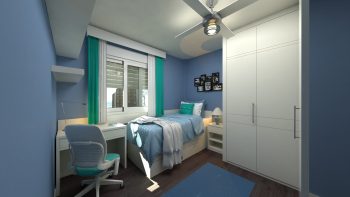Student Housing in the age of COVID-19
 At the beginning of the pandemic, most sectors in real estate were anxious to see how COVID-19 would affect business. One sector in particular that was closely monitored was student housing. Off-campus housing property owners and managers not only had to comply with each states’ guidelines, but also had to adapt accordingly to colleges and universities’ varying responses.
At the beginning of the pandemic, most sectors in real estate were anxious to see how COVID-19 would affect business. One sector in particular that was closely monitored was student housing. Off-campus housing property owners and managers not only had to comply with each states’ guidelines, but also had to adapt accordingly to colleges and universities’ varying responses.
Off-campus student housing providers moved rapidly to adjust operations and protocols as information became available from the Centers for Disease Control and Prevention (CDC). It quickly became clear that most amenities would have to shut down including gyms, business centers and coffee bars, but what was unclear was for how long. Many industry professionals, including myself, believed that we would be able to do a deep-clean during spring break (2-3 weeks) and then we could reopen amenities with modified cleaning procedures and capacity limitations; however, as we all know, this was not the case.
Once students started to return from spring break, colleges and universities across the country were beginning to shut down, either going fully remote or hybrid. Some universities like John Hopkins University, who was tracking the virus progression from the very beginning, took matters very seriously, while others were not so quick to the punch. Due to these fluctuations from school to school, property managers had to adapt according to protocols enforced by each state and institution. Most off-campus student housing operators put together a “COVID-19 Task Force” to evaluate each state’s plan and strategize how to best mirror their policies.
Operational changes due to the pandemic
The pandemic reminded me that residents truly appreciate the amenities and features offered at their apartment communities. Because of this, I believe property owners and managers will prioritize reopening amenity spaces when they feel it is safe. All apartment communities had to make modifications to their amenity spaces to ensure the safety of their residents, while still striving to provide an exceptional living experience despite the circumstances. Besides the standard expectation of making hand sanitizer readily available throughout the building and entrances, increasing routine cleaning of public spaces and using sign-in sheets to monitor guests and employees, property owners had to get creative in order to provide their residents with outstanding service while ensuring their health and safety.
One amenity that was difficult to safely provide during the pandemic was in-person community events. Many students who lived off-campus enjoyed social events such as Taco Tuesdays, movie nights and other resident gatherings, and property managers relied on these activities to foster a sense of community and connection with their residents. Since the pandemic hit, there has been an influx of property managers utilizing virtual tools and social media to engage with their residents. At GMH University Housing, we’ve hosted virtual meet-ups and Zoom parties, conducted trivia and social media competitions and more. We’ve found these events allow us to stay connected with our residents and remind them that we are still here and eager to service them, no matter the circumstances.
Leasing during the 2020-2021 school year
Not only have amenities changed, but so has the leasing process. When students began to look for their homes for the 2020-2021 school year, the leasing teams had to strategize how to best show prospective residents their units while maintaining safety. Prior to the pandemic, virtual leasing was an option, but now it is the only option. Since the majority of the student population is Gen Z and more tech-savvy than previous generations, I have found that virtual leasing can and has been efficient with our resident base. Although in-person leasing will return once it is safe to, the pandemic has forced us to adapt to leasing via FaceTime or Zoom, and will be more common moving forward.
The pandemic has also required property managers to think outside of the box when it comes to the move-in/out process. Before the pandemic, student housing had certain days when most residents would move in or out, creating a high amount of traffic. Once the pandemic hit, property managers had to find a way to expedite this process while still maintaining the safety of their residents, families and staff. This school year, GMH University Housing implemented a contactless process which created less congestion across our entire portfolio. Instead of the typical one- to two-day process, we stretched it to three to four days to assist with the flow and to help maintain the safety of all. In addition, we used an Entrata program that allowed residents and their families to complete all paperwork virtually, prior to their move-in date. We have found this process extremely successful, allowing us to provide a better and smoother customer experience. Post-COVID we will continue to use this process throughout our entire portfolio.
The resilience of the student housing sector
Although uncertain at times, the pandemic has shown us that the student housing sector is strong and here to stay for the long term. Many operators and managers were worried that residents would not keep up with their rent or might choose to stay at home because of the virtual setting of classes this year. However, we noticed that most students returned to campus as they prefer their independence and having a college experience, even if that means classes are not taking place in-person. Even more so, we found that students favor the privacy that off-campus housing provides, giving them the freedom to live their life to the fullest during a transformative chapter in their lives.
Source: rejournals.com















 Accessibility
Accessibility